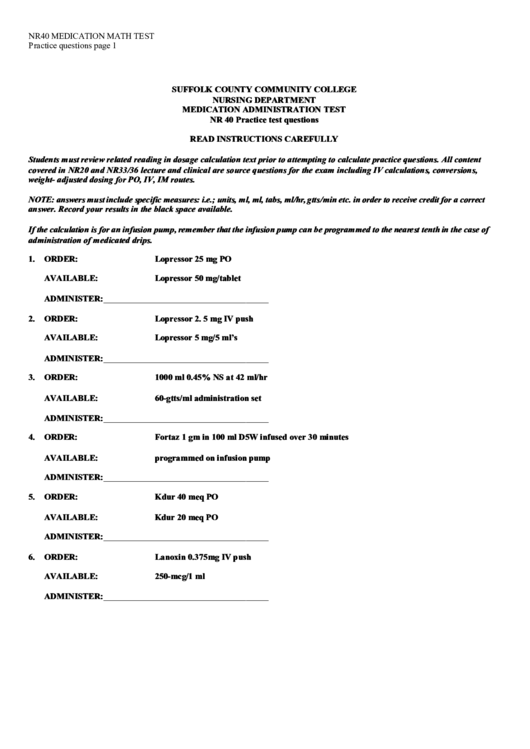

Knowing how to do conversions is SUPER important. PART ONE: 6 Steps to Nursing Med Math Success.

If we need mcg, then we need to be working in all mcg, not mcg and mg. To do that, we need to know how to fluidly work our way to and from varying units. Example: If a physician orders 250 mg every 6 hours, the dose is 250 mg and the dosage regimen is every 6 hours. To do accurate med math we first have to realize that we should be working in the same unit. For example, if a doctor orders half a gram of a drug every 12 hours and the hospital has 250 milligram pills, the nurse must divide 500 milligrams (0.5 grams. Example: clients K+ is 2.0 mEq/dl and the physician orders a potassium bolus of. You will have to convert from one measurement system to another when the doctors order, for example, orders a medication in terms of grains (gr) and you have. How many mL will the nurse give Answers at the end of study guide. Today, I am going to touch base on the main units of measurements that we use which include: Time (seconds-minutes-hours), mass (micrograms, milligrams, grams, Kilograms, and pounds) and Capacity (Milliliters, litters). Nurses must perform dosage calculations when administering medications.

Not only do we have to know conversions from the imperial system to the metric system, we also need to know our way around the metric system to help accurately calculate medication dosages. This poses a problem for medical providers because we need to know how to convert to the correct unit for our med-math equations. There is a small variation that the United States is bad about, and that is the use of the Imperial system that includes pounds among other measurements.


 0 kommentar(er)
0 kommentar(er)
